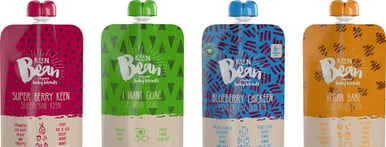Food manufacturers are under a lot of pressure to produce high-quality products with clean ingredient labels.
Many of them are responding by putting the food itself under pressure.
High pressure processing (HPP), sometimes referred to as hydrostatic pressure processing, preserves food by literally squeezing the life out of microorganisms that cause spoilage. This is accomplished by putting the product into flexible packaging, placing the packages in a chamber filled with water, and inducing hydrostatic pressure in the water of between 43,000 and 87,000 pounds per square inch. This pressure produces corresponding pressure inside the package that is lethal to bacteria, spores, and other microscopic life; it also degrades certain enzymes that would otherwise break down the food. The result is a shelf-stable product.
HPP has a significant advantage over retorting (canning), aseptic processing, and other processes for shelf stability. It does not subject the product to heat. This preserves the food closer to its original state, which is especially important for food that probably will be consumed cold, like juices or salsas. It also accomplishes preservation without chemicals, which is important for processors who want to show consumers a simple, short, wholesome-sounding list of ingredients on the package.
“High pressure processing equipment has allowed our company to provide clean labels to consumers,” Mike Durbin, manager of engineering and plant maintenance for juice producer Evolution Fresh, said in a trade show panel discussion reported in Packaging World magazine.
Minimally processed products with clean labels are especially important in categories like baby food. That is why Johnny Kien, who launched Keen Bean Baby Blends (after founding Green Carrot Juice Co.), chose HPP to process his line of baby food with ingredients like goji, acai, hemp hearts, and chickpeas.

“It is time to start serving our little ones real food,” Kien told Food Processing magazine. “Our product is as close to homemade, mama- (or dada-) fresh as possible, with the convenience of a spout pouch.”
The technology has been around for about 30 years, with pureed avocados being the first commercialized HPP product. Most foods processed with HPP are at least semi-fluid, such as dips, salsas, and “wet” salads like coleslaw. However, the technology has expanded to solid foods like deli meats. Because the pressure comes equally from all sides, it can treat a whole piece of food without causing damage.
HPP must be done in flexible packaging; rigid packages would not be able to transmit pressure internally. Much of the processing is done in pouches intended for individual sale, but HPP is also done in bulk flexible packaging. This is seen most often in foodservice, where, for example, smoothies in an HPP bag-in-box could be loaded into a dispenser, and in delis and other ready-to-eat areas in supermarkets, for items like bulk wet salads.
By the same token, ingredient processors can use HPP to ship minimally processed, shelf-stable ingredients to their food manufacturing customers. Being able to ship and store high-quality products and ingredients without refrigeration opens up an exciting new dimension for food processors and their suppliers.
Download our Bag-In-Box brochure to learn more about flexible packaging options today!

.jpg?width=815&name=flexible-packaging%20(2).jpg)
